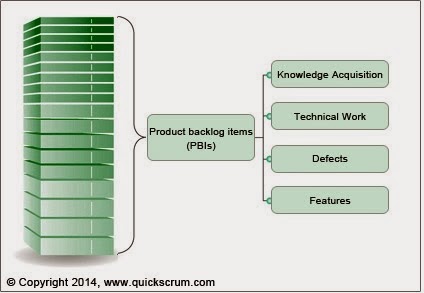The official scrum guide mentions about carrying out routine maintenance activities to update the
product backlog, or to carry out the product backlog refinement. The exact time
to be invested in the grooming activity depends upon the management, and how scrum
is to be implemented in the project. A rule-of-the-thumb followed is to put in
approximately 10% of the time utilized during the sprint activity, into the
grooming activity. It is important to be clear regarding some of the aspects
associated with product backlog refinement.
Purpose and goals of carrying out the refinement
The
primary reason why the product backlog should be refined is to update or
rebuild the backlog so that it remains consistent with the requirements
provided by the stakeholders with regards the new features and functionalities
to be included in the project. Another reason is to review existing user
stories or product backlog items and decide whether they are still useful or
pertinent from the development point of view, and to update the acceptance criterion and the explanation detailed in each PBI.
It
is recommended to use the “DEEP” method - detailed appropriately, estimated,
emergent, and properly ordered – while prioritizing the user stories within the
backlog. Larger stories or epics should be systematically broken down in to
more manageable smaller ones, proper estimation by assigning relevant story
points to the PBIs should be carried out,
user stories should be rearranged as per the new priorities, and the queries regarding the development of
user stories during the sprint should be effectively answered by the product
owner. Whenever a meeting is planned to refine the PBIs, the objective should
be to carry out enough refinement work so that it lasts for at least three future
sprints.
Duration and frequency of the grooming activity
Each
activity and meeting is time boxed in scrum. Following the same principle, the
product backlog refining or grooming activity should be time boxed too.
However, in practice, there is no pre-designated activity or a meeting for
planning and carrying out the product backlog refinement activity in the same
manner as the sprint planning meeting and the sprint retrospective meeting is
held. Backlog grooming is carried out more as a routine activity than anything
else in scrum, and the guide does not exactly specify how much time or efforts
should be invested in the activity. Perhaps a possible reason could be that the
product development and creation of product backlogs vary from project to
project, and it is difficult to standardize how the grooming activity should be
carried out since the size and nature of the product backlog cannot be adjudged. Read more on


